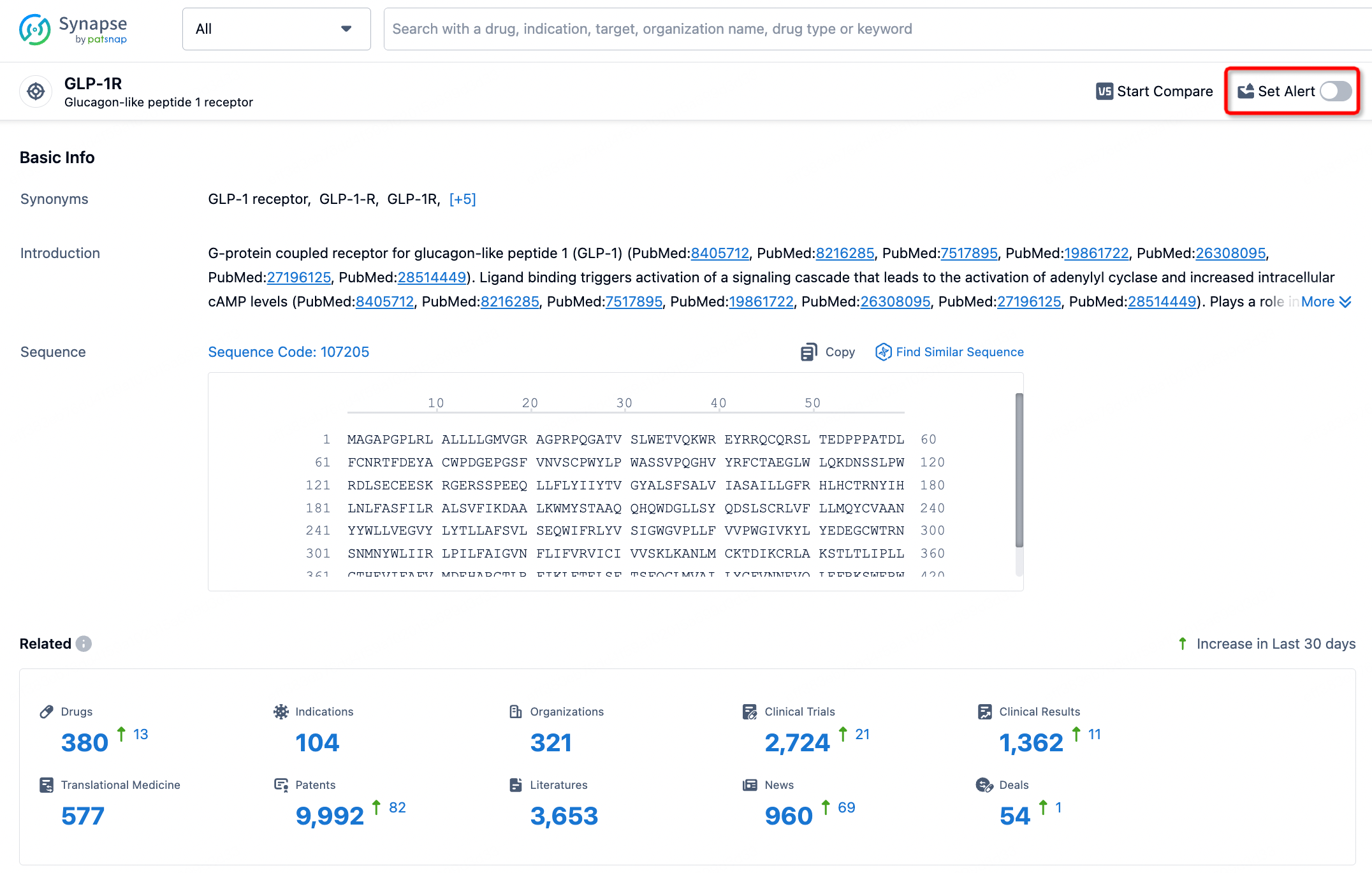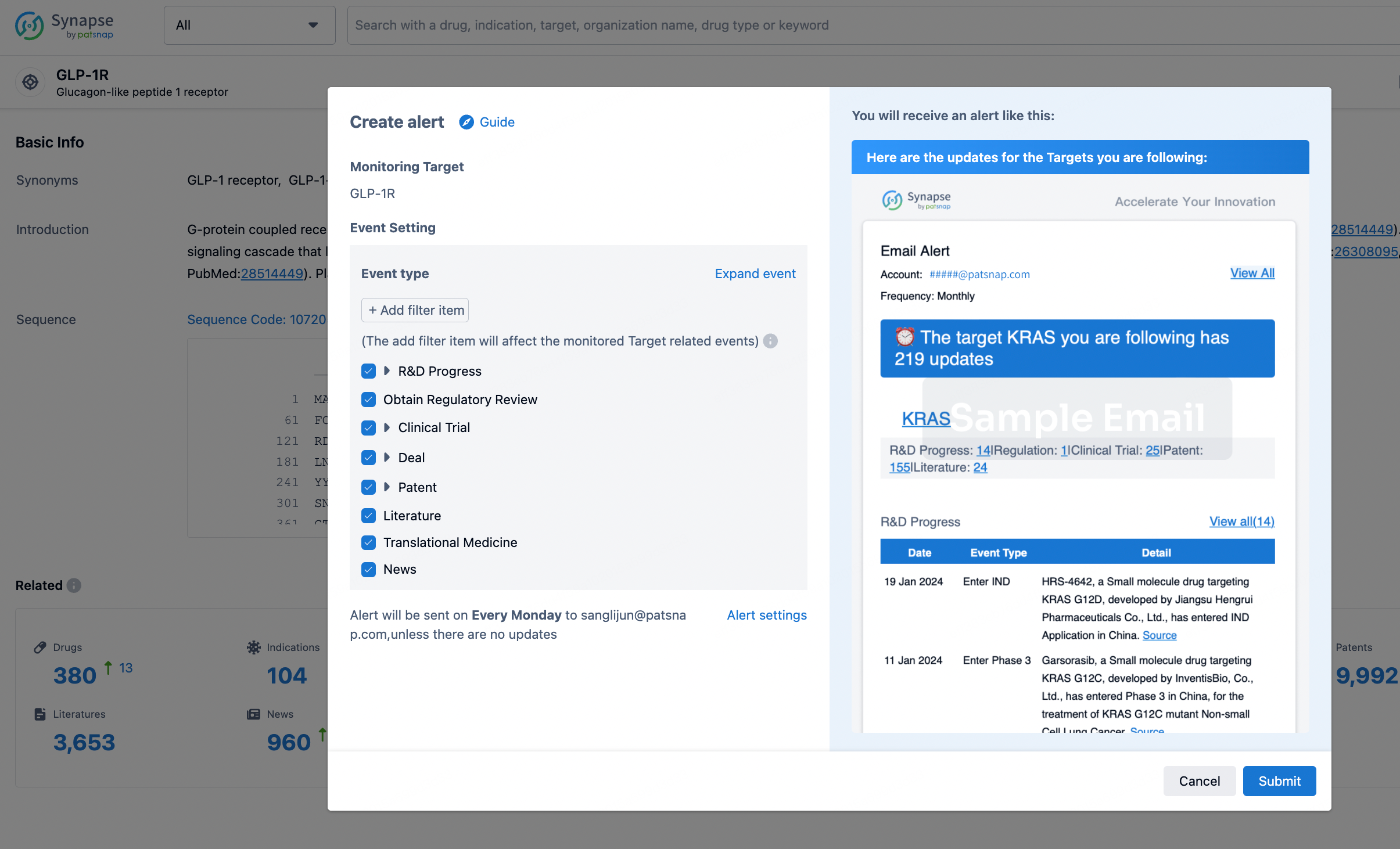Request Demo
What are STK16 inhibitors and how do they work?
25 June 2024
In the rapidly evolving field of medical research, the discovery and development of new therapeutic agents is crucial for advancing treatment options for various diseases. One such area of interest is the inhibition of specific kinases, including STK16 (Serine/Threonine Kinase 16). STK16 inhibitors are emerging as promising candidates for therapeutic intervention in a range of diseases due to their unique mechanism of action and potential applications. This article aims to provide an overview of STK16 inhibitors, how they work, and their potential uses in medicine.
STK16, also known as PKL12, is a member of the kinase family of enzymes, which play pivotal roles in numerous cellular processes, including cell cycle regulation, apoptosis, and signal transduction. Kinases like STK16 function by phosphorylating specific substrates, thereby modulating their activity and interactions. Dysregulation of kinase activity is often implicated in various pathologies, including cancer, inflammation, and metabolic disorders. This makes kinases attractive targets for drug development, with the ultimate goal of restoring normal cellular function by modulating kinase activity.
STK16 inhibitors are small molecules designed to specifically inhibit the activity of the STK16 enzyme. These inhibitors work by binding to the active site of the kinase, preventing it from phosphorylating its target substrates. By blocking the kinase activity of STK16, these inhibitors can effectively halt abnormal signaling pathways that contribute to disease progression.
The development of STK16 inhibitors typically involves high-throughput screening of compound libraries to identify molecules that can bind to STK16 with high affinity. Once potential inhibitors are identified, they undergo further optimization to enhance their specificity, potency, and pharmacokinetic properties. Advanced techniques such as structure-based drug design and computational modeling are often employed to refine these molecules and develop more effective inhibitors.
One of the primary areas of interest for STK16 inhibitors is in oncology. Aberrant activation of kinases is a hallmark of many cancers, and STK16 has been implicated in the proliferation and survival of cancer cells. By inhibiting STK16 activity, these inhibitors can potentially suppress tumor growth and enhance the efficacy of existing treatments. Preclinical studies have shown that STK16 inhibitors can induce apoptosis in cancer cells and inhibit tumor progression in animal models, highlighting their potential as novel anti-cancer agents.
In addition to cancer, STK16 inhibitors are being investigated for their potential in treating inflammatory diseases. Chronic inflammation is a key driver of many pathological conditions, including autoimmune diseases and metabolic syndrome. By modulating kinase activity, STK16 inhibitors may help to reduce inflammation and ameliorate disease symptoms. Early research suggests that these inhibitors can effectively reduce the production of pro-inflammatory cytokines and attenuate inflammatory signaling pathways, providing a new avenue for therapeutic intervention.
Another promising application of STK16 inhibitors is in the field of metabolic disorders. Kinases play a crucial role in regulating metabolic pathways, and dysregulation of kinase activity is often associated with conditions such as diabetes and obesity. By targeting STK16, these inhibitors may help to restore normal metabolic function and improve insulin sensitivity. Preliminary studies have shown that STK16 inhibitors can enhance glucose uptake and reduce lipid accumulation in cellular models, indicating their potential as treatments for metabolic diseases.
Despite the promising potential of STK16 inhibitors, it is important to note that their development is still in the early stages. Further research is needed to fully elucidate the role of STK16 in various diseases and to optimize the inhibitors for clinical use. Additionally, the safety and efficacy of these inhibitors must be rigorously tested in clinical trials before they can be approved for therapeutic use.
In conclusion, STK16 inhibitors represent a promising new class of therapeutic agents with potential applications in cancer, inflammatory diseases, and metabolic disorders. By targeting the activity of the STK16 kinase, these inhibitors can modulate key signaling pathways and restore normal cellular function. While much work remains to be done, the future of STK16 inhibitors looks bright, offering hope for the development of new and effective treatments for a range of diseases.
STK16, also known as PKL12, is a member of the kinase family of enzymes, which play pivotal roles in numerous cellular processes, including cell cycle regulation, apoptosis, and signal transduction. Kinases like STK16 function by phosphorylating specific substrates, thereby modulating their activity and interactions. Dysregulation of kinase activity is often implicated in various pathologies, including cancer, inflammation, and metabolic disorders. This makes kinases attractive targets for drug development, with the ultimate goal of restoring normal cellular function by modulating kinase activity.
STK16 inhibitors are small molecules designed to specifically inhibit the activity of the STK16 enzyme. These inhibitors work by binding to the active site of the kinase, preventing it from phosphorylating its target substrates. By blocking the kinase activity of STK16, these inhibitors can effectively halt abnormal signaling pathways that contribute to disease progression.
The development of STK16 inhibitors typically involves high-throughput screening of compound libraries to identify molecules that can bind to STK16 with high affinity. Once potential inhibitors are identified, they undergo further optimization to enhance their specificity, potency, and pharmacokinetic properties. Advanced techniques such as structure-based drug design and computational modeling are often employed to refine these molecules and develop more effective inhibitors.
One of the primary areas of interest for STK16 inhibitors is in oncology. Aberrant activation of kinases is a hallmark of many cancers, and STK16 has been implicated in the proliferation and survival of cancer cells. By inhibiting STK16 activity, these inhibitors can potentially suppress tumor growth and enhance the efficacy of existing treatments. Preclinical studies have shown that STK16 inhibitors can induce apoptosis in cancer cells and inhibit tumor progression in animal models, highlighting their potential as novel anti-cancer agents.
In addition to cancer, STK16 inhibitors are being investigated for their potential in treating inflammatory diseases. Chronic inflammation is a key driver of many pathological conditions, including autoimmune diseases and metabolic syndrome. By modulating kinase activity, STK16 inhibitors may help to reduce inflammation and ameliorate disease symptoms. Early research suggests that these inhibitors can effectively reduce the production of pro-inflammatory cytokines and attenuate inflammatory signaling pathways, providing a new avenue for therapeutic intervention.
Another promising application of STK16 inhibitors is in the field of metabolic disorders. Kinases play a crucial role in regulating metabolic pathways, and dysregulation of kinase activity is often associated with conditions such as diabetes and obesity. By targeting STK16, these inhibitors may help to restore normal metabolic function and improve insulin sensitivity. Preliminary studies have shown that STK16 inhibitors can enhance glucose uptake and reduce lipid accumulation in cellular models, indicating their potential as treatments for metabolic diseases.
Despite the promising potential of STK16 inhibitors, it is important to note that their development is still in the early stages. Further research is needed to fully elucidate the role of STK16 in various diseases and to optimize the inhibitors for clinical use. Additionally, the safety and efficacy of these inhibitors must be rigorously tested in clinical trials before they can be approved for therapeutic use.
In conclusion, STK16 inhibitors represent a promising new class of therapeutic agents with potential applications in cancer, inflammatory diseases, and metabolic disorders. By targeting the activity of the STK16 kinase, these inhibitors can modulate key signaling pathways and restore normal cellular function. While much work remains to be done, the future of STK16 inhibitors looks bright, offering hope for the development of new and effective treatments for a range of diseases.
How to obtain the latest development progress of all targets?
In the Synapse database, you can stay updated on the latest research and development advances of all targets. This service is accessible anytime and anywhere, with updates available daily or weekly. Use the "Set Alert" function to stay informed. Click on the image below to embark on a brand new journey of drug discovery!
AI Agents Built for Biopharma Breakthroughs
Accelerate discovery. Empower decisions. Transform outcomes.
Get started for free today!
Accelerate Strategic R&D decision making with Synapse, PatSnap’s AI-powered Connected Innovation Intelligence Platform Built for Life Sciences Professionals.
Start your data trial now!
Synapse data is also accessible to external entities via APIs or data packages. Empower better decisions with the latest in pharmaceutical intelligence.


